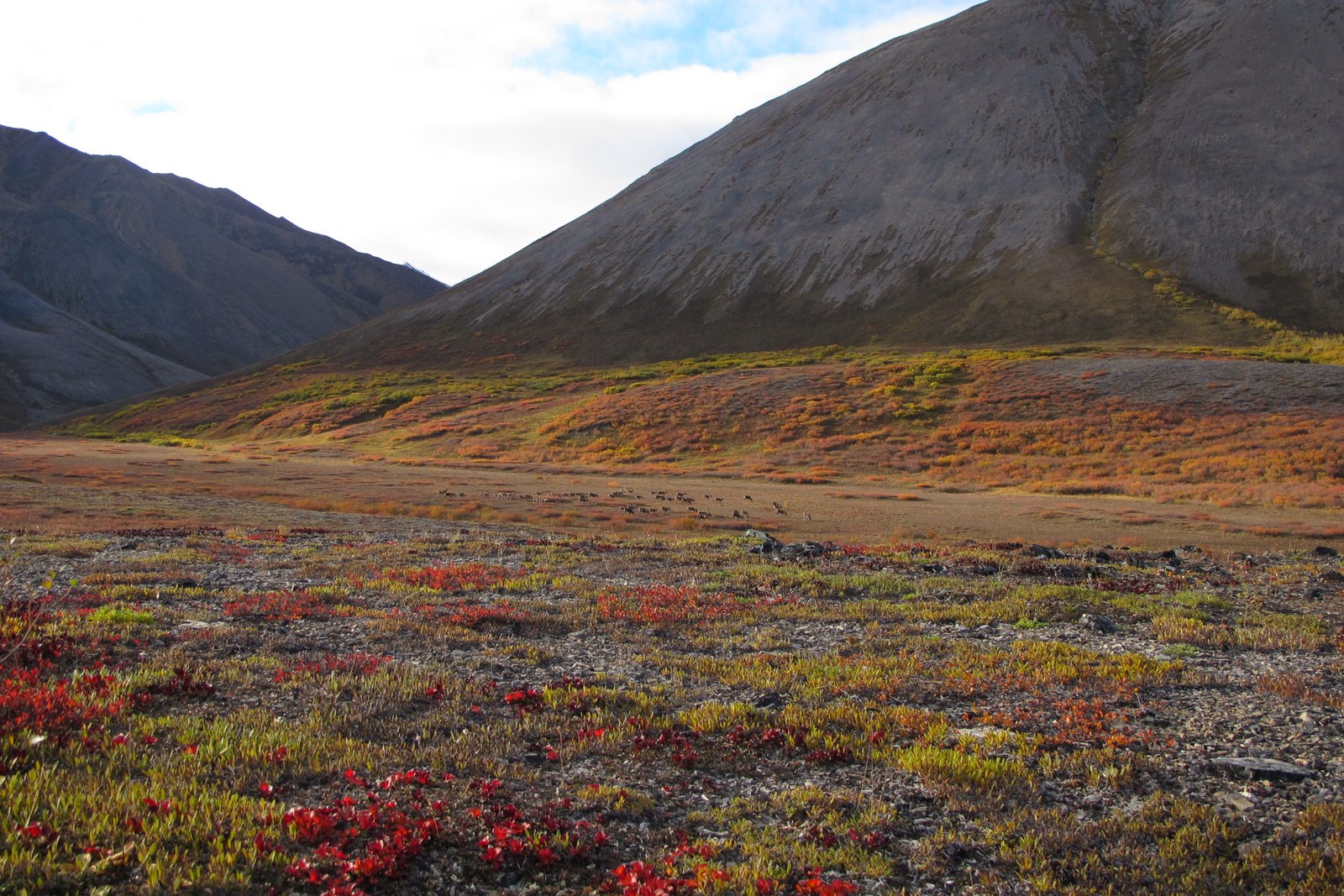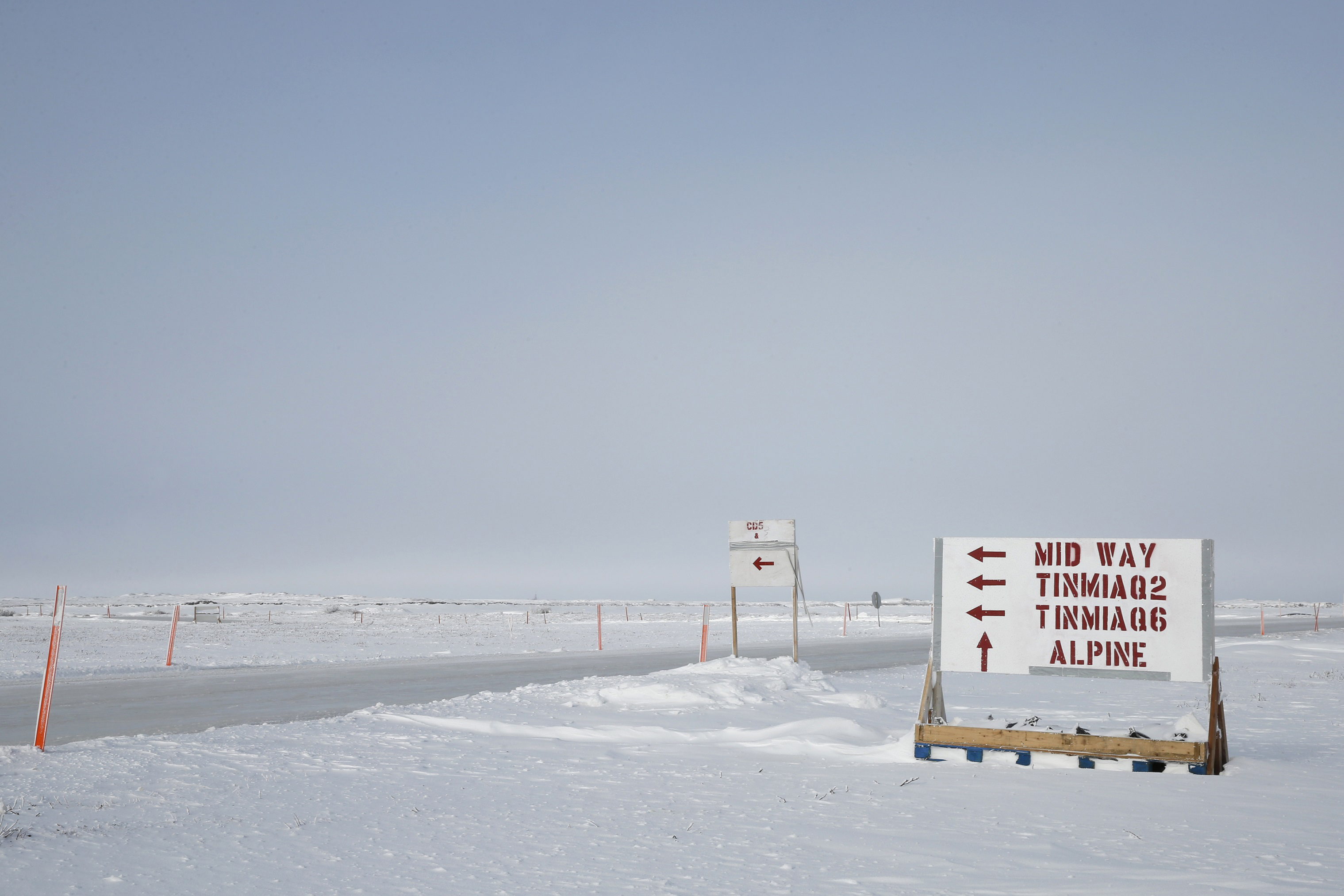The Trump administration just pushed forward on two major Arctic Alaska development projects
The Bureau of Land Management released draft environmental impact statements for the Ambler Road and ConocoPhillips' Willow project.

The Trump administration on Friday released documents that pushed two controversial Arctic Alaska projects — one a road, and the other an oilfield — closer to reality.
The U.S. Bureau of Land Management issued a draft environmental impact statement for the Ambler Road Project, which would carve a 211-mile road through the Brooks Range foothills to an isolated region of northwestern Alaska that holds copper reserves. The road is needed to make Ambler district mining commercially feasible.
“I realize the importance of this project to the State of Alaska and for the state’s ability to develop its resources and as such, I am committed to ensuring a thorough and comprehensive analysis. This can’t be done without substantive input from stakeholders,” Chad Padgett, BLM’s Alaska state director, said in a statement.
Official notice of the Ambler draft EIS is scheduled to be published in the Federal Register on Aug. 30, opening up a 45-day public comment period, the BLM said.
On the same day, the agency released its draft environmental impact statement on ConocoPhillips Alaska’s plan to develop its Willow prospect. If developed, Willow, would be the westernmost producing oil field on the North Slope. The prospect is located in the National Petroleum Reserve in Alaska, and it holds what ConocoPhillips has estimated as up to 750 million barrels of oil.
ConocoPhillips is proposing what it calls the Willow Master Plan — a stand-alone oil field with its own central processing facility, infrastructure pad, up to five drill sites, a networks of roads, including an access from the outside, a gravel mine and a new island on state-managed waters within the federally managed petroleum reserve, according to the BLM summary. If developed, Willow could produce up to 130,000 barrels of oil daily, according to the agency.
“This Master Development Plan proposal allows us to look at the development of a lease unit as a whole which will enhance efficiencies and provide for robust environmental review,” Padgett said in a separate statement.

Both projects’ draft environmental impact documents were released in the final days of Joe Balash’s tenure at the Department of the Interior. Balash, the assistant secretary for lands and minerals management, is an Alaskan who has shepherded these and other Alaska projects — notably the plan for oil leasing in the Arctic National Wildlife Refuge. He resigned his position last week and will leave Interior on Aug. 30.
The Ambler road is proposed as an industrial-only corridor that would allow access to the mining area and transport out of product.
The Alaska Industrial Development and Export Authority, a state agency with bonding power, is the entity seeking to build the road, which it called the Ambler Mining District Industrial Access Project. But the beneficiaries would be mining companies that have been exploring the copper resources near the northwestern Alaska village of Ambler.
The main company benefiting would be Vancouver-based Trilogy Metals. In a statement, Trilogy’s president lauded the release of the draft EIS as an important milestone.
“The completion of the Draft EIS marks a critical step in the permitting of the AMDIAP which is a crucial to unlocking the incredible mineral wealth within the Ambler Mining District,” Trilogy President and Chief Executive Officer Rick Van Nieuwenhuyse said in a statement. “The development of the Ambler District will lead to the generation of thousands of high paying jobs for the residents of Alaska. I want to commend the BLM and all cooperating agencies for getting the Draft EIS done and look forward to completing the permitting of the road.”
But the project has drawn heated opposition from residents in the villages in the region of the road corridor, guides in the region, environmentalists and budget hawks who consider the project an expensive public subsidy to a private corporation. A top concern is the potential impact to the Western Arctic Caribou Herd, North America’s largest caribou herd. Villagers in the region hunt the herd, and caribou is important to the indigenous culture there. Tribal councils in about a dozen villages have passed resolutions in opposition, as have other organizations, including the Tanana Chiefs Conference, a tribal consortium representing 42 Interior Alaska villages.
The Willow project, though welcomed by Alaska oil industry supporters, also has its critics. Environmentalists and some Alaska Natives say the project, as it is currently planned, would damage some key Arctic habitat and would interfere with Inupiat residents’ access to traditional wild foods.
In a letter sent a year ago to the BLM, the Native Village of Nuiqsut — the tribal government for the village closest to the Willow project — said it would add to problems already created by other oil development.
“We are already experiencing negative impacts from existing development in the region and are feeling the effects from infrastructure and development activities circling our community. This project will involve an entirely new central processing facility, an airstrip, a gravel mine, and offshore barging activity. The additional aircraft traffic, and offshore barging alone are potentially significant to our community’s subsistence hunting and whaling practices, in addition to the pipelines, pads and roads while will further encircle us,” said the letter, sent during the scoping process that paved the way for the draft environmental impact statement.
Trustees for Alaska, an Anchorage-based environmental law firm, accused the Trump administration of sloppy work on both projects.
“This is one of the most egregious examples of the Trump Administration trying to slam the door on legally-required public processes to date, and to rush forward exploitation of the Arctic at all costs,” Trustees staff attorney Bridget Psarianos said in a statement. “Willow proposes massive oil and gas industrialization on a North Slope area with incredible wildlife and subsistence values. The Ambler Road would slice an industrial corridor through the foothills of the southern Brooks Range and Gates of the Arctic National Park.”
The newly released documents for each of these projects “will take months to adequately review standing alone; the Trump administration wants to provide the public and those most impacted by these mega-projects a mere seven weeks for both,” Psarianos said.